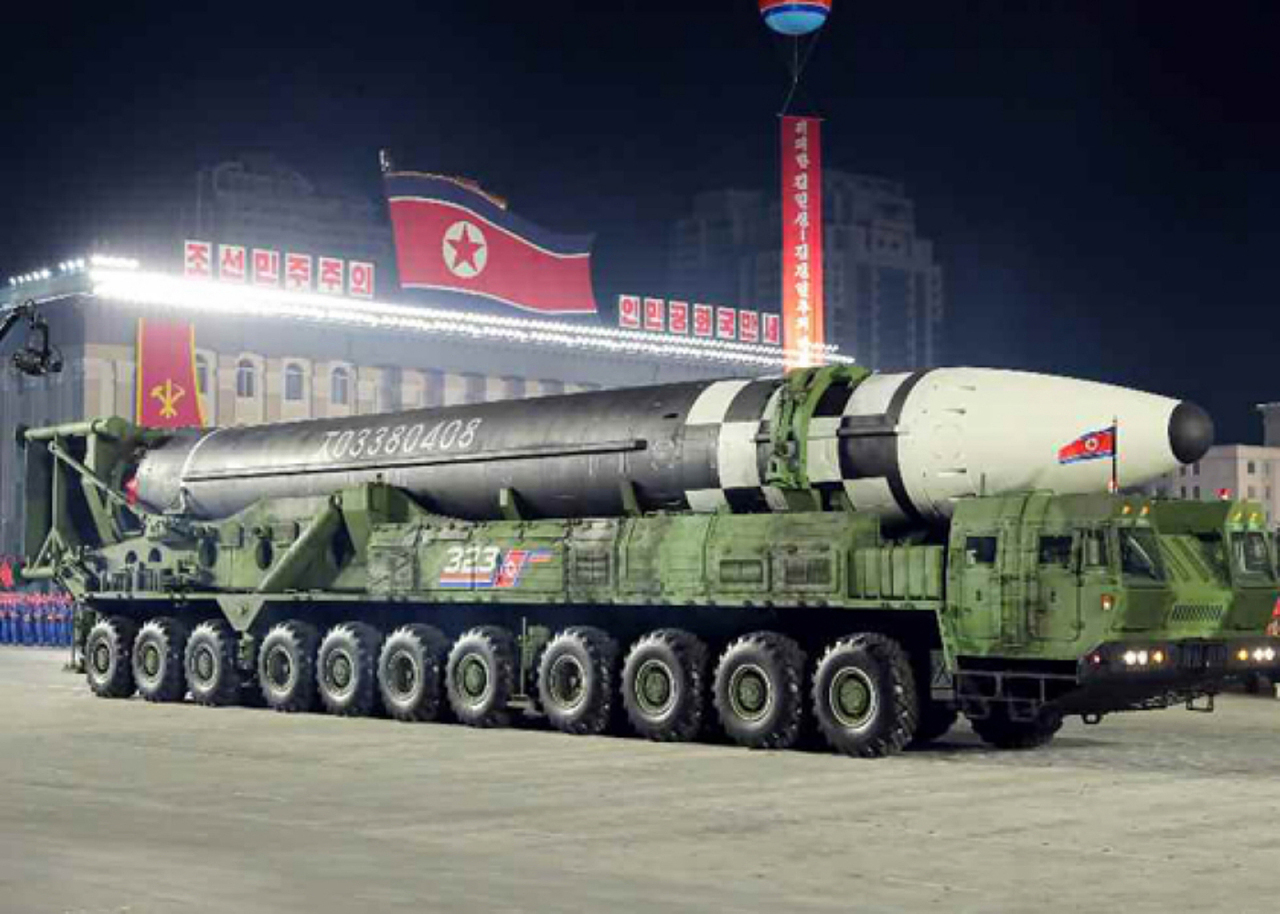 |
(Korean Central Television) |
Cheong Wa Dae on Sunday analyzed North Korean leader Kim Jong-un's message in his speech during a military parade the day earlier and stressed that existing inter-Korean agreements should be honored to prevent the recurrence of an armed conflict on the peninsula.
The presidential office convened an emergency session of the National Security Council (NSC) standing committee to discuss the issue. Suh Hoon, director of national security at Cheong Wa Dae, presided over the meeting that was joined by other top national security officials, including the foreign, defense and unification ministers.
They reviewed the content of Kim's address and "emphasized that various accords between the South and the North for the prevention of bilateral armed clashes and war should be kept at any cost," Cheong Wa Dae said in a press statement.
Kim warned that his country would keep bolstering its nuclear deterrent, as its military displayed what seems to be a new intercontinental ballistic missile (ICBM) and an upgraded submarine-launched ballistic missile (SLBM) during the event held in Pyongyang to mark the 75th founding anniversary of the Workers' Party of Korea.
The NSC officials agreed to continue analyzing the strategic meaning of those newly unveiled weapon systems and specifics, according to Cheong Wa Dae.
They took note of Kim's expression of hope for the day when the two Koreas will "join hands" after the COVID-19 crisis is over.
The NSC members construed Kim's message as reflecting Pyongyang's position that it will seek to restore inter-Korean relations as soon as appropriate conditions are created.
They agreed that relevant authorities will cope with the matter in a coordinated stance, Cheong Wa Dae said.
They also urged Pyongyang to respond positively to Seoul's offer that the two sides conduct a joint inquiry into the gunshot killing by the North's troops of a South Korean government worker just north of the Yellow Sea border last month, it added.
In its first known large-scale military parade in two years, the North showed off what appeared to be a larger ICBM mounted on a 22-wheel transporter erector launcher (TEL). North Korea watchers said it might be a multiple-warhead long-range missile.
It remains unconfirmed whether the North has fully mastered ICBM technologies, especially that of atmospheric reentry.
In a press briefing, South Korea's defense ministry voiced concern about the North's demonstration of the new strategic weapon.
"In connection with North Korea's weapon system that has been newly open to the public, the intelligence authorities of South Korea and the United States are closely analyzing," the ministry said.
It then pointed out Kim's remark that his nation won't use its military force preemptively.
The ministry called on the North to work together to reduce military tensions substantively through the complete implementation of the Sept. 19 bilateral military agreement signed in 2018.
It called for the reconnection of the inter-Korean military communication line in order to find the truth behind the killing of the maritime ministry official via a joint probe.
In a separate statement, Seoul's foreign ministry voiced expectation that the North would accede to President Moon Jae-in's recent proposal for the Northeast Asia Cooperation Initiative for Infectious Disease Control and Public Health and his renewed call for the declaration of a formal end to the 1950-53 Korean War.
The ministry also redoubled calls for the North to return to dialogue to achieve substantive progress in the efforts for lasting peace on the peninsula.
The unification ministry also voiced hopes that leader Kim's message wishing South Korea a fast recovery from the coronavirus pandemic during his speech may lead to "peace in the Korean Peninsula and improvement in inter-Korean relations." (Yonhap)







![[Today’s K-pop] Blackpink’s Jennie, Lisa invited to Coachella as solo acts](http://res.heraldm.com/phpwas/restmb_idxmake.php?idx=644&simg=/content/image/2024/11/21/20241121050099_0.jpg)
